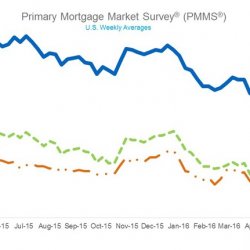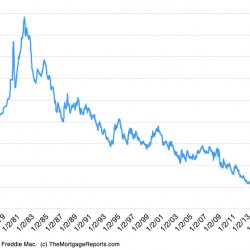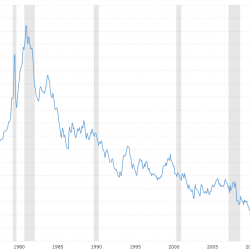how do adjustable rate mortgages react to rising rates fundamentals explained

You can't borrow 100% of what your house is worth, or anywhere close to it, however – what is the debt to income ratio for conventional mortgages. Part of your home equity should be used to pay the loan's expenditures, consisting of home mortgage premiums and interest. Here are a couple of other things you need to know about just how much you can borrow: The loan proceeds are based on the age of the youngest borrower or, if the debtor is wed, the younger partner, even if the younger partner is not a debtor.
The lower the mortgage rate, the more you can obtain. The higher your home's evaluated value, the more you can borrow. A strong reverse home mortgage financial assessment increases the profits you'll receive because the loan provider will not withhold part of them to pay property taxes and property owners insurance in your place.
In January 2018, the average initial primary limitation was $211,468 and the typical maximum claim amount was $412,038. The typical borrower's initial primary limitation is about 58% of the maximum claim amount. The federal government decreased the preliminary primary limit in October 2017, making it harder for property owners, specifically more youthful ones, to receive a reverse home mortgage.
The federal government lowered the limit for the very same factor it altered insurance coverage premiums: because the home mortgage insurance coverage fund's deficit had nearly doubled over the previous . This is the fund that pays lenders and safeguards taxpayers from reverse home mortgage losses. To further make complex things, you can't borrow all of your initial primary limits in the first year when you pick a lump sum or a credit line.
And if you choose a lump amount, the quantity you get up front is all you will ever get. If you select the line of credit, your credit limit will grow in time, but just if you have unused funds in your line. Both spouses have to consent to the loan, however both do not need to be debtors, and this arrangement can produce issues (what kind of mortgages are there).
A reverse home mortgage must be paid back when the debtor dies, and it's normally paid back by offering the home. If the enduring spouse desires to keep the home, he or she will have to pay back the loan through other ways, potentially through a costly re-finance. Just one partner may be a debtor if only one partner holds title to your home, perhaps because it was inherited or due to the fact that its ownership precedes the marital relationship.
Some Of How Do Points Work In Mortgages
The nonborrowing spouse might even lose the home if the borrowing partner had to move into an assisted living center or nursing house for a year or longer. With a product as potentially rewarding as a reverse home loan and a vulnerable population of borrowers who may have cognitive disabilities or be frantically seeking financial salvation, scams are plentiful.
The vendor or specialist might or may not in fact provide on promised, quality work; they might just take the homeowner's money. Loved ones, caretakers, and monetary advisors have also taken benefit of senior citizens by using a power of lawyer to reverse home mortgage the house, then taking the earnings, or by convincing them to purchase a financial product, such as an annuity or entire life insurance, that the senior can just pay for by getting a reverse home loan.
These are just a few of the reverse home mortgage scams that can journey up unwitting homeowners. Another threat connected with a reverse home mortgage is the possibility of foreclosure. Even though the customer isn't accountable for making any home loan paymentsand therefore can't become overdue on thema reverse home mortgage requires the debtor to satisfy specific conditions.
As a reverse home loan debtor, you are required to reside in the home and preserve it. If the home falls under disrepair, it will not be worth reasonable market price when it's time to offer, and the lending institution will not be able to recover the full quantity it has actually encompassed the debtor.
Once again, the loan provider enforces these requirements to protect its interest in the house. If you do not pay your real estate tax, your local tax authority can seize your home. If you do not have property owners insurance and there's a home fire, the lending institution's security is damaged. About one in 5 reverse home mortgage foreclosures from 2009 through 2017 were triggered by the customer's failure to pay real estate tax or insurance coverage, according to an analysis by Reverse Home loan Insight.
Preferably, anyone interested in getting a reverse mortgage will take the time to thoroughly learn more about how these loans work. That method, no unethical lender or predatory scammer can prey on them, they'll be able to make a sound decision even if they get a poor-quality reverse mortgage counselor and the loan will not include any unpleasant surprises. what is an underwriter in mortgages.
The Best Guide To How Do Banks Make Money On Mortgages
Customers need to take the time to educate themselves about it to be sure they're making the very best option about how to utilize their home equity.
Much like a conventional mortgage, there are expenses associated with getting a reverse home loan, specifically the House Equity Conversion Mortgage (HECM). These costs are typically higher than those associated with a conventional home loan. Here are a few fees you can expect. The in advance home loan insurance coverage premium (MIP) is paid to the FHA when you close your loan.
If the home costs less than what is due on the loan, this http://riverugrc095.theburnward.com/7-simple-techniques-for-what-is-the-best-rate-for-mortgages insurance covers the difference so you will not wind up underwater on your loan and the lender does not lose money on their financial investment. It also secures you from losing your loan if your loan provider fails or can no longer meet its responsibilities for whatever factor.
The expense of the in advance MIP is 2% of the assessed value of the house or $726,535 (the FHA's loaning limitation), whichever is less. For instance, if you own a house that's worth $250,000, your in advance MIP will cost around $5,000. Together with an upfront MIP, there is likewise a yearly MIP that accumulates every year and is paid when the loan comes due.
5% of the loan balance. The home mortgage origination fee is the amount of cash a lender credits originate and process your loan. This expense is 2% of the first $200,000 of the home's worth plus 1% of the remaining worth after that. The FHA has actually set a minimum and optimum cost of the origination cost, so no matter what your home is valued, you will not pay less than $2,500 or more than $6,000.
The maintenance charge is a regular monthly charge by the loan provider to service and administer the loan and can cost approximately $35 every month. Appraisals are required by HUD and figure out the marketplace worth of your house. While the true cost of your appraisal will depend upon elements like location and size of the house, they generally cost in between $300 and $500.

Some Known Incorrect Statements About What Are The Different Types Of Home Mortgages
These expenses may consist of: Credit report fees: $30 $50 File preparation costs: $50 $100 Courier costs: $50 Escrow, or closing charge: $150 $800 Title insurance coverage: Depends on your loan and area There are numerous elements that affect the rates of interest for a reverse home loan, consisting of the loan provider you deal with, the kind of loan you get and whether you get a repaired- or adjustable rate home loan.






Ingen kommentarer endnu